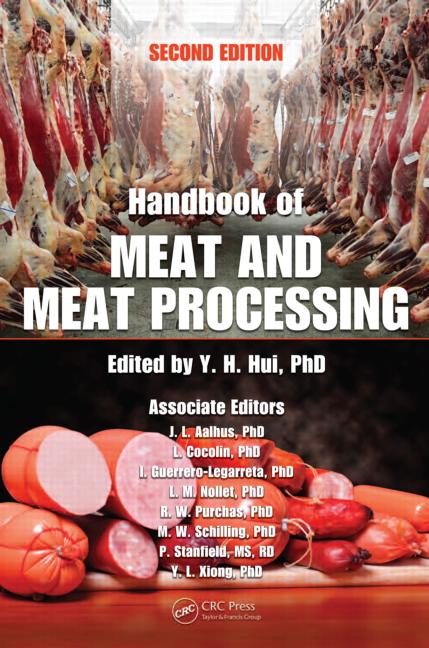Total recall




Video image analysis systems, robots and live animal tracking tags are coming to a plant near you, if they haven’t already.
Software systems are enabling meat- and poultry-processing operations to largely automate their inventory management, logistics and product traceability today. Although some technologies may not be new — they are simply improvements upon existing software — today’s software systems are certainly streamlining paperwork and reducing physical labor at protein-processing plants.
“A lot of companies are trying to extract more value out of everything that goes through their plants, whether it’s individual worker yields or tracking carcasses,” says Marcine Moldenhauer, president and owner, Meat-Link Management LLC, based in Wichita, Kan. “They need to understand what’s going on at the plant at every step of the way.”
Perhaps the biggest hot-button technology today is the use of video image analysis systems to grade carcasses by applying the U.S. Department of Agriculture’s (USDA) traditional standards.
“Sophisticated software allows companies to use images to assess the visible lean from fat meat, and determine the product’s marbling score and yield characteristics, therefore predicting the approximate yield value of the carcass,” says Dale Woerner, Ph.D., assistant professor, Department of Animal Sciences, Colorado State University, based in Fort Collins, Colo.
By taking the images and data and putting them into a mathematical or statistical model, this software develops an algorithm that will predict yield and cut-ability, making predictions on the types of cuts best-suited to each unique carcass, says Woerner.
He notes that the pork industry has been more innovative than the beef industry with using instrumentation to determine fat and color quality. Asian markets, for example, prefer a darker product color, and carcasses can be sorted by color during the processing system to meet this demand.
“Pork facilities harvest three to five times more product than beef plants, so they’ve increased their efficiency to grade product far beyond what human inspectors could do,” he says. The lamb industry, says Woerner, is also moving forward with the USDA on using vision systems to determine product quality.
Automating efficiency
Nearly every processing facility today uses software for logistics purposes to manage inventory, to the extent that if it were to malfunction, the plant would be temporarily shut down, says Woerner.
“Automated inventory systems, however, increase efficiency and reduce the size of the plant,” he says. Production or operation software is more directed to the orders process and tracks systems on the harvest floor to begin data collection on every shift and plant for each day, says Moldenhauer.
“The ability to sort, store and retrieve custom and short orders through robotics and electronic order tracking via bar-coding systems has been a major benefit to both our team members and our customers,” says Worth Sparkman, manager public relations, Tyson Foods Inc., based in Springdale, Ark. When it makes economic and logistical sense, he says, robots also do a lot of the heavy lifting in many of Tyson’s plants.
“This has many safety and ergonomic benefits because team members are not experiencing as much strain,” he says.
Plants are also using software to analyze customer orders, in order to optimize their carcass purchases, says Moldenhauer.
A smaller processing plant, Wasatch Meats uses software systems to track its custom orders since each customer’s cut and price can be different, says Scott Rich, vice president, Wasatch Meats Inc., based in Salt Lake City.
“The entire order can be printed out for production before heading over to the cutters,” he says. “Based on the data, the computer can tell us if the weights are out of spec on the invoice.”
Employees still handwrite the product weights on the order, but the company is in the process of automating that aspect, as well, notes Rich.
“The software prevents us from using incorrect weights, which provides cost reductions, improved customer service and better efficiencies,” he says. “However, because of our company size, we always have to ask ourselves if we’re getting the right return on our investment.”
Typically, most poultry-processing plants today have software for sales, automated inventory systems and a count of how many birds are in the house. Where software systems are making new inroads is with preventative equipment maintenance, says Gary McMurray, chief, Georgia Tech Research Institute’s Food Processing Technology Division, based in Atlanta.
“The software evaluates why a piece of equipment may be having problems, so there aren’t breakdowns which close down lines for the day,” he says.
He notes that it would be helpful for cutting machines’ software to dynamically assess the true size of the bird, since product weights don’t reflect possible differences in birds’ abdomen length and shoulder width.
Tracking animals
from ranch to plate
The meat and poultry industry was spared from the recent Food Safety Modernization Act’s traceability and inspection provisions, largely because it is already closely regulated by the USDA. However, some processors are finding it to their regulatory — and marketing — advantage to continue installing high-tech source verification, arrival tracking and live-animal tracking systems.
Different types of software exist that can electronically identify an animal from the ranch (its date and time of birth, mother and location are stored on ear tags) to plate, which is vitally important during a food recall.
“We can trace everything with our computer system,” says Rich. Since animal data is entered manually by employees when it arrives, Wasatch Meats is reviewing whether to invest in handheld scanners for this stage and to provide an easier trace backward in the event of a recall, he adds.
Regardless, when the USDA Food Safety and Inspection Service (FSIS) was once investigating a possible recall (ultimately not associated with Wasatch Meats) the company was able to provide all animal records within two hours under the current system, he says.
Woerner notes that traceability data is also useful for marketing claims involving source and age verification, humane living conditions, non-hormone raised and natural. Furthermore, he says, software systems can always be improved to maximize efficiency and the bottom line.
Often times, employees (and companies) can be resistant to change and won’t allow these technologies to prove themselves, says Moldenhauer. The software is also exposed to a rough physical environment, so it may not have a long shelf life.
“However, as our industry is faced with more regulations and demands — and [higher] expectations of consumers — we have to embrace more technology,” she says.
Looking for a reprint of this article?
From high-res PDFs to custom plaques, order your copy today!









